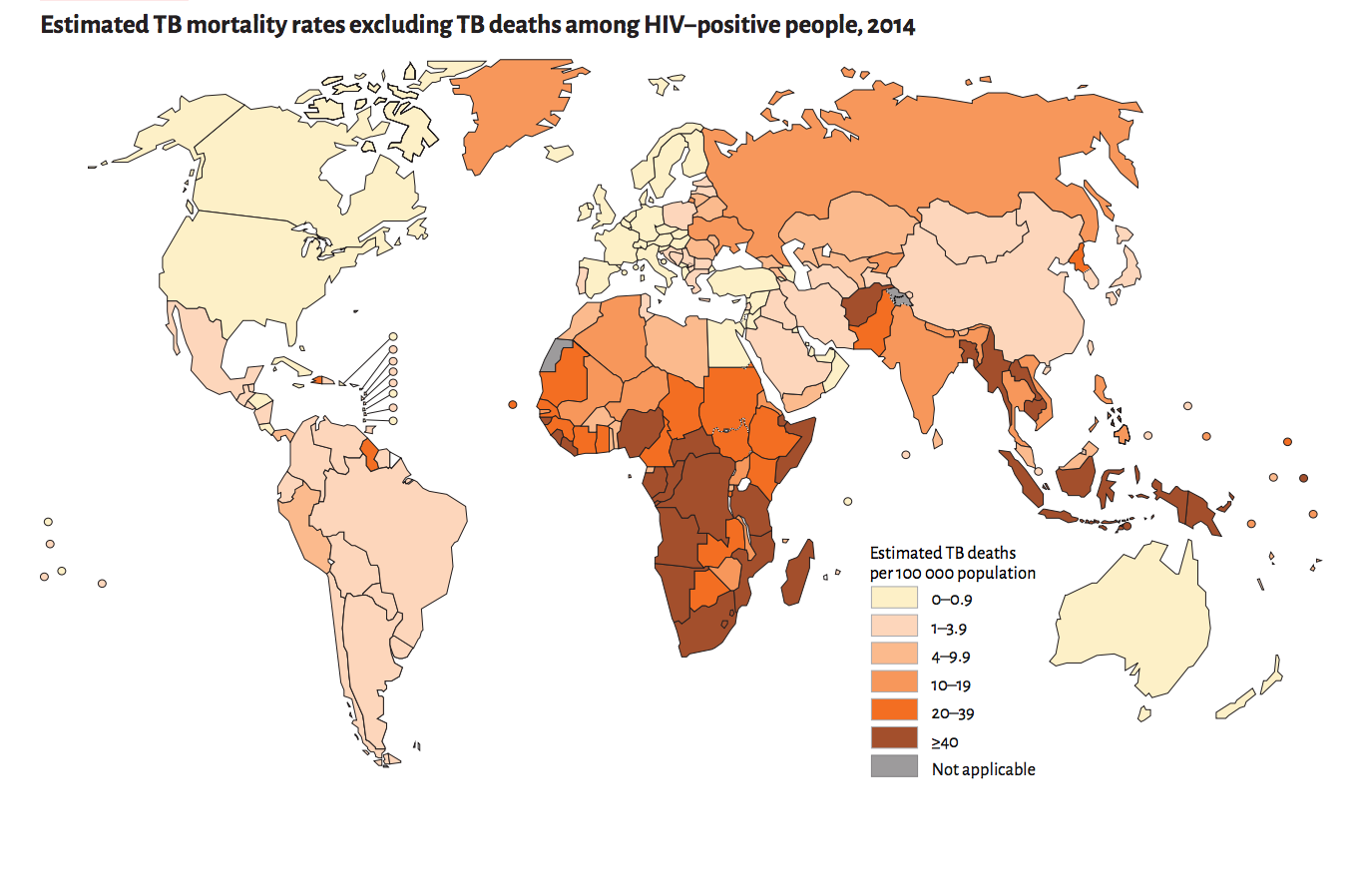The World Health Organization today released new global data on Tuberculosis. The biggest takeaway: TB has now ranks along side AIDS as the leading cause of death from infectious disease worldwide. In 2014, TB killed 1.5 million people worldwide, disproportionately in poor countries. HIV’s death toll last year was 1.2 million; and 400,000 people died from the horrid HIV-TB co-infection.


But these staggering numbers also mask some generally positive trend in the global fight against TB. Mortality rates have fallen 47% since 1990. And the Millennium Development Goal to halt and reverse the spread of HIV was achieved worldwide. Though, as often the case, the progress was uneven across regions,with Africa still lagging behind.


In all, the report estimates that effective diagnosis and treatment of TB has saved an estimated 43 million lives since 2000, with the launch of the MDGs.
This kind of progress was made largely because treating TB is relatively inexpensive and straightforward. It requires inexpensive medicine to be taken daily for a period do several weeks. The hardest part, really, is in the diagnosis. It could take several weeks for sputum samples to be taken, transported to a national lab, then diagnosed. In 2010 the WHO endorsed a new rapid diagnostic test that cut down the time it takes to analyze a sputum sample to about 100 minutes.
Cutting down this “detection gap”even further is now the Stop TB Parternhip’s main strategy for reducing the global TB burden even further. From the WHO:
“Of the 9.6 million people who fell ill with TB in 2014, 6.0 million (62.5%) were reported to national authorities. That means that, worldwide, more than a third (37.5%) of the cases went undiagnosed or were not reported to national authorities. The quality of care for people in the latter category is unknown.”
As is often the case with these sorts of reports, the general trend is overwhelmingly positive when put into a lager global historic perspective. Before the WHO launched the Stop TB Partnership, the international community did not do much to save poor people in the developing world from this easily preventable disease. Now, over 40 million lives have been saved. That is quite an accomplishment for humanity.
